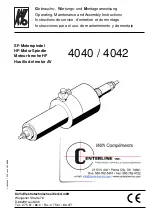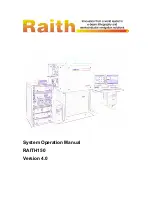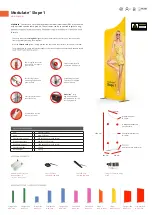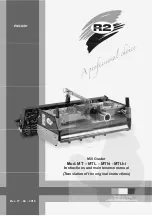
Chapter 9 MATH and Reference
139
Each window is alternatively used between frequency resolution and amplitude accuracy, and the appropriate
window may be selected according to the characteristics of the following windows.
⚫
Rectangular window
This is the best window type for resolution frequencies that are very close to the same value, but this type
is the least effective at accurately measuring the amplitude of these frequencies. It is the best type of
measuring the spectrum of non-repetitive signals and measuring the frequency component close to DC.
Use the “Rectangular” window to measure transients or bursts of signal levels before or after almost the
same event. Moreover, this window can be used to measure equal-amplitude sine waves with very close
frequencies and wideband random noises with relatively slow spectral variations.
⚫
Hamming window
This is the best window type for resolution frequencies that are very close to the same value, and the
amplitude accuracy is slightly better than the “Rectangular” window. The Hamming type has a slightly
higher frequency resolution than the Hanning type.
Use Hamming to measure sinusoidal, periodic, and narrowband random noises. This window is used for
measuring transients or bursts of signal levels before or after events with significant differences.
⚫
Hanning window
This is the best window type for measuring amplitude accuracy but less effective for resolving frequencies.
Use Hanning to measure sinusoidal, periodic, and narrowband random noises. This window is used for
measuring transients or bursts of signal levels before or after events with significant differences.
⚫
Blackman-Harris window
This is the best window type for measuring frequency amplitude, but worst for measuring the resolution
frequency.
Use the Blackman-Harris measurement to find the main single-signal frequency waveform for higher
harmonics.
Since the oscilloscope performs FFT transform on the finite-length time record, the FFT algorithm
assumes that YT waveform is continuously repeated. Thus, when the period is integral, the amplitudes of
YT waveform at the beginning and at the end are the same, and waveform will not interrupt. However, if
the period of YT waveform is not integral, the waveform amplitudes at the beginning and at the end are
different, resulting in high-frequency transient interruption at the junction. In the frequency domain, this
effect is called leakage. Therefore, to avoid leakage, the original waveform is multiplied by a window
function, forcing the values at the beginning and at the end to be zero.
Note: Signals with DC components or deviations can cause errors or deviations in the FFT waveform components. AC
coupling can be selected to reduce DC components.
Summary of Contents for ATO1000 Series
Page 1: ......
Page 2: ...Version Info Version Date Remarks V1 0 2020 06 ...
Page 52: ...Chapter 3 Automotive Test 49 Figure 3 30 Electronic fuel pump test ...
Page 71: ...68 Figure 3 49 K line test ...
Page 79: ...76 Figure 3 57 Mazda 6 Cylinder internal pressure measurement ...
















































